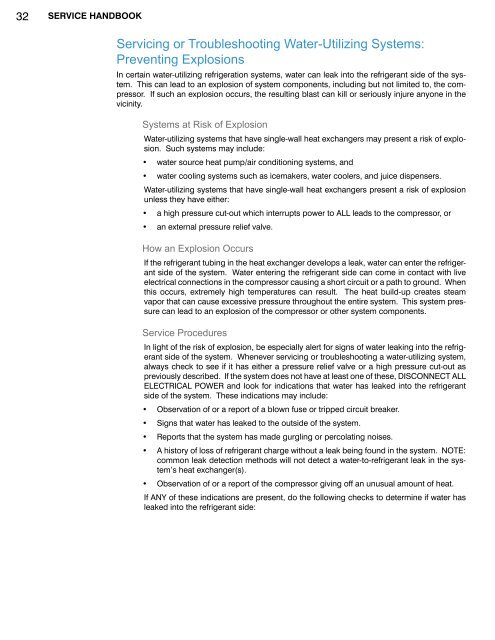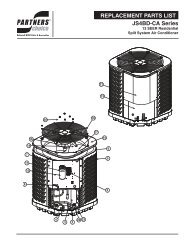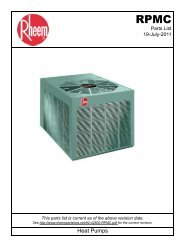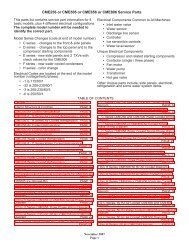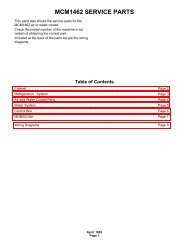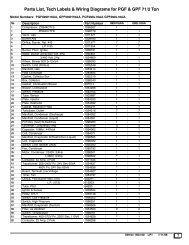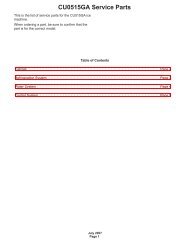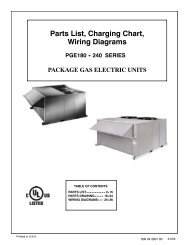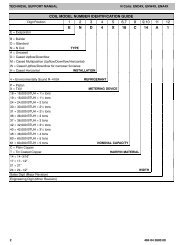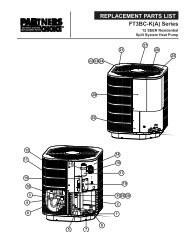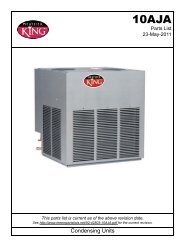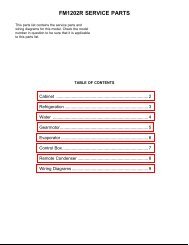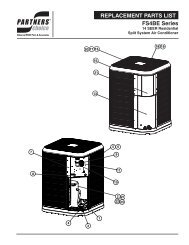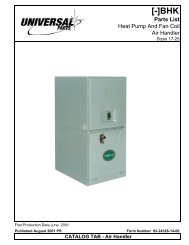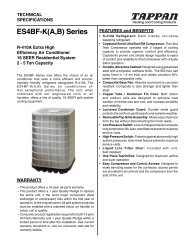Hermetic Compressor - Tecumseh
Hermetic Compressor - Tecumseh
Hermetic Compressor - Tecumseh
You also want an ePaper? Increase the reach of your titles
YUMPU automatically turns print PDFs into web optimized ePapers that Google loves.
32<br />
SERVICE HANDBOOK<br />
Servicing or Troubleshooting Water-Utilizing Systems:<br />
Preventing Explosions<br />
In certain water-utilizing refrigeration systems, water can leak into the refrigerant side of the system.<br />
This can lead to an explosion of system components, including but not limited to, the compressor.<br />
If such an explosion occurs, the resulting blast can kill or seriously injure anyone in the<br />
vicinity.<br />
Systems at Risk of Explosion<br />
Water-utilizing systems that have single-wall heat exchangers may present a risk of explosion.<br />
Such systems may include:<br />
• water source heat pump/air conditioning systems, and<br />
• water cooling systems such as icemakers, water coolers, and juice dispensers.<br />
Water-utilizing systems that have single-wall heat exchangers present a risk of explosion<br />
unless they have either:<br />
• a high pressure cut-out which interrupts power to ALL leads to the compressor, or<br />
• an external pressure relief valve.<br />
How an Explosion Occurs<br />
If the refrigerant tubing in the heat exchanger develops a leak, water can enter the refrigerant<br />
side of the system. Water entering the refrigerant side can come in contact with live<br />
electrical connections in the compressor causing a short circuit or a path to ground. When<br />
this occurs, extremely high temperatures can result. The heat build-up creates steam<br />
vapor that can cause excessive pressure throughout the entire system. This system pressure<br />
can lead to an explosion of the compressor or other system components.<br />
Service Procedures<br />
In light of the risk of explosion, be especially alert for signs of water leaking into the refrigerant<br />
side of the system. Whenever servicing or troubleshooting a water-utilizing system,<br />
always check to see if it has either a pressure relief valve or a high pressure cut-out as<br />
previously described. If the system does not have at least one of these, DISCONNECT ALL<br />
ELECTRICAL POWER and look for indications that water has leaked into the refrigerant<br />
side of the system. These indications may include:<br />
• Observation of or a report of a blown fuse or tripped circuit breaker.<br />
• Signs that water has leaked to the outside of the system.<br />
• Reports that the system has made gurgling or percolating noises.<br />
• A history of loss of refrigerant charge without a leak being found in the system. NOTE:<br />
common leak detection methods will not detect a water-to-refrigerant leak in the system’s<br />
heat exchanger(s).<br />
• Observation of or a report of the compressor giving off an unusual amount of heat.<br />
If ANY of these indications are present, do the following checks to determine if water has<br />
leaked into the refrigerant side:


